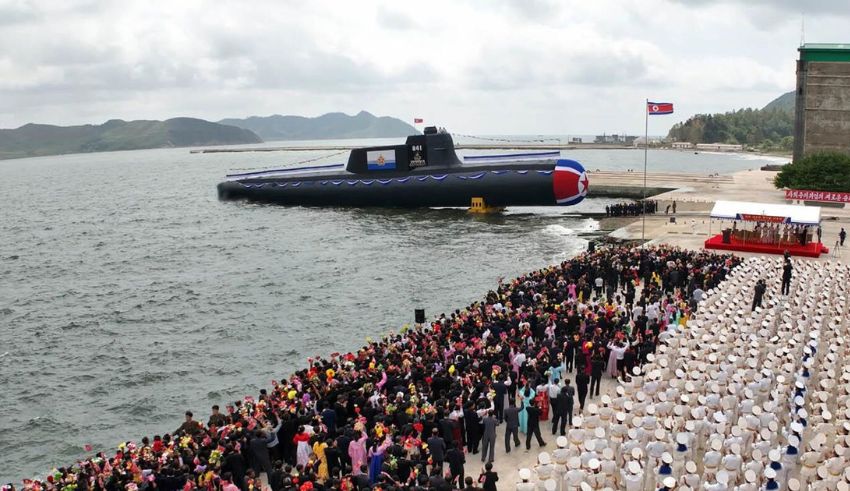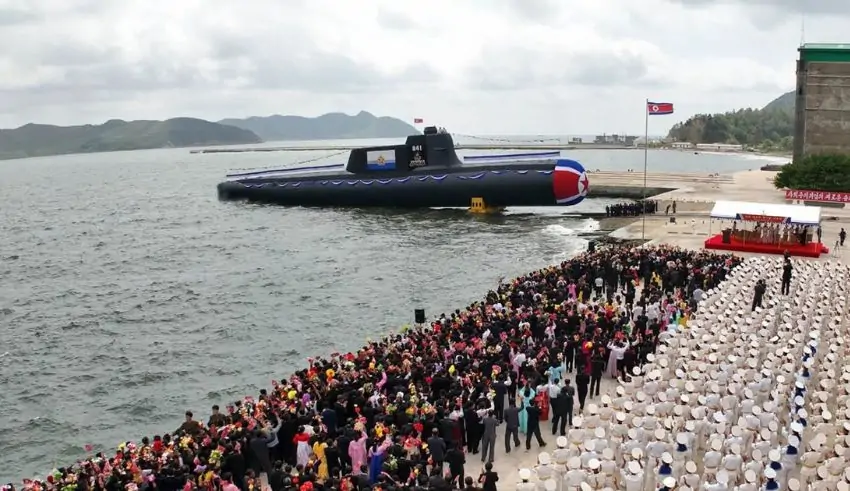

(C) Sputnik News
Submarine-launched nuclear weapons are missiles that can carry nuclear warheads and can be fired from underwater by submarines. They are considered one of the most potent and survivable weapons in a nuclear arsenal, as they can evade detection and interception, and can strike targets from long distances and various directions.
North Korea has been developing its nuclear and missile programs for decades, despite international sanctions and pressure. The country sees nuclear weapons as a deterrent and a bargaining chip against its enemies, especially the US and South Korea, which it accuses of threatening its sovereignty and security.
North Korea has test-fired several long-range submarine-launched ballistic missiles (SLBMs), as well as short-range SLBMs and cruise missiles that can be fired from submarines. North Korea has a large submarine fleet but only the experimental ballistic missile submarine 8.24 Yongung (August 24th Hero) is known to have launched a missile.
In September 2023, North Korea unveiled a new tactical nuclear attack submarine, which it claimed was “a strategic weapon of great significance” and “a powerful means of deterring and overpowering the hostile forces”. The submarine has been specifically designed to launch tactical nuclear weapons from underwater, a capability that North Korea believes “heralded the beginning of a new chapter” for its naval forces. The exact number of missiles that the vessel can carry and launch remains undisclosed by KCNA.
North Korea’s submarine-launched nuclear weapons pose a serious threat to regional and global peace and stability, as they increase the risk of miscalculation, escalation, and nuclear war. Some of the hidden dangers of North Korea’s submarine-launched nuclear weapons include:
The world faces a difficult and urgent task of dealing with North Korea’s submarine-launched nuclear weapons, as they pose a grave and growing threat to international security and order. Some of the possible ways of dealing with North Korea’s submarine-launched nuclear weapons include:
K-pop being a big deal for SEVENTEEN, they're set forth in some serious celebration to mark a 10-year-long feat. This…
Trying to control rising prices and cool down angry consumers, Japan for the first time in 25 years has brought…
On April 22, 2025 Nissan revealed an advance preview of its next fourth-generation Elgrand, a high-end minivan to be introduced…
Snow White delivered weak theater earnings and faced harsh business reviews from its March 21, 2019 release. The flop performance…
On April 22, 2025 President Ferdinand “Bongbong” Marcos Jr. proclaimed a Day of National Mourning in memory of late National…
This year for PS5, Switch, and PC. This announcement was made by Bandai Namco and Forge Digitals. This is provides…
This website uses cookies.
Read More